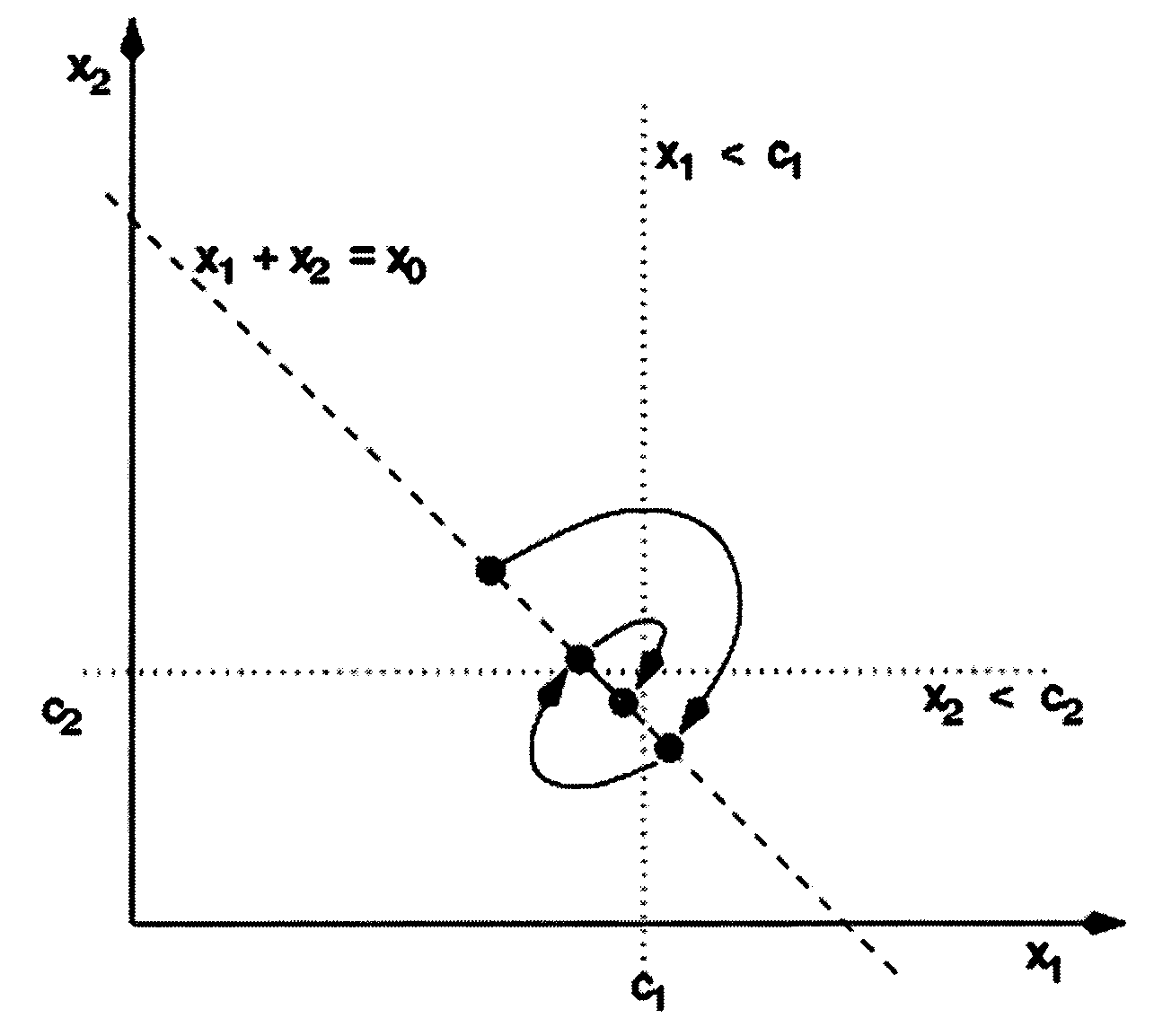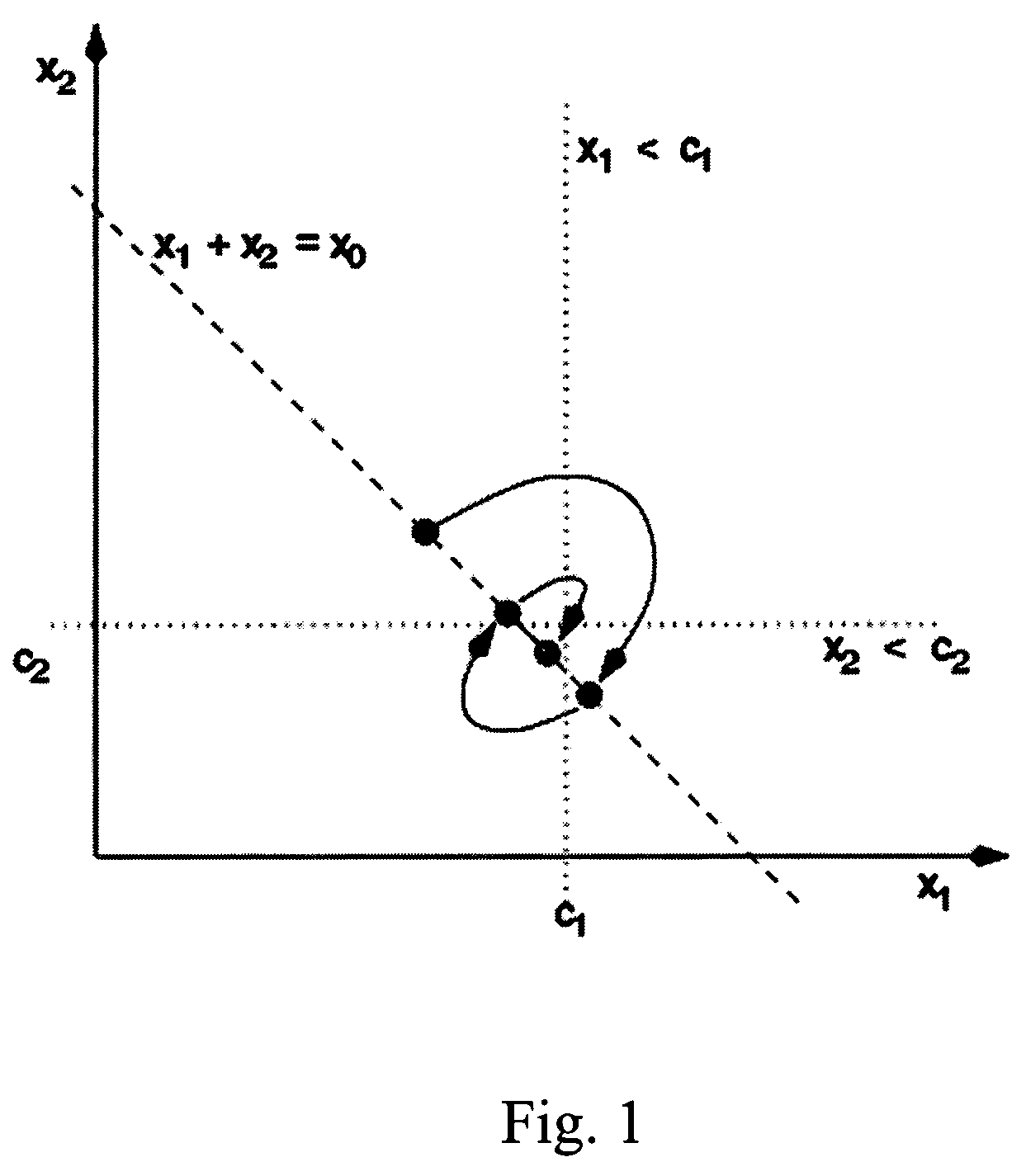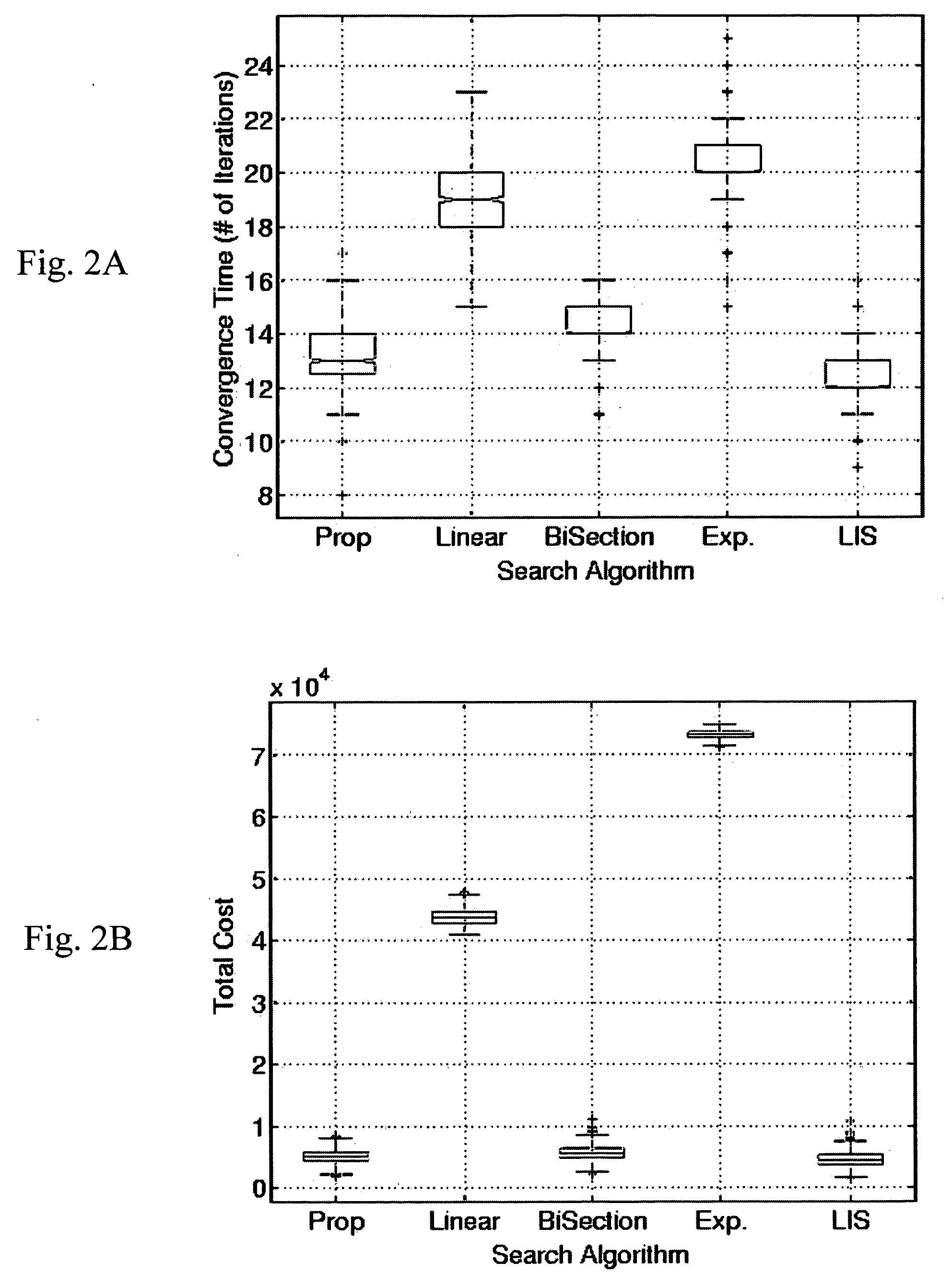Load balancing techniques for inter-domain traffic engineering
- Summary
- Abstract
- Description
- Claims
- Application Information
AI Technical Summary
Benefits of technology
Problems solved by technology
Method used
Image
Examples
example 1
Comparison of Various Allocation Strategies
[0085] This example compares the different allocations strategies: proportional allocation, linear-search, bisection search, exponential search and multidimensional iterative bisection search (MIBS). FIGS. 2A-B and FIGS. 3A-B show comparisons of these strategies, through both the convergence time and the total cost. The graphs show box plots giving the mean, quartiles, and extreme values of the 1,000 simulations, for a range of values for the number of available paths (ω). The results clearly show that the linear and exponential approaches are much worse than any alternative. This is because these schemes are conservative in their approach, i.e., they do not cause congestion on any uncongested path, and thus incur high cost by not easing the congestion on the congested path.
[0086] For a small number of available paths (ω)), the bisection approach is also significantly worse than the proportional allocation and local search approach, which...
example 2
Comparisons of Different Allocation Strategies for Variable Number of Alternate Paths
[0087] This example studies the proportional allocation and the multidimensional iterative bisection search (MIBS) approaches. In this example, the total number of alternate paths that are available varied from 2 to 20 for a constant path load, x0(0)=10,000. The number of available paths, ω, also varied from 1.0 to 1.2. FIGS. 4 to 6 show the results—giving the average values as points, and the 95 percentiles of the distribution of results as vertical bars. The results indicate, both algorithms have similar performance vis-a-vis convergence time. However, MIBS outperforms the other strategies when the total cost is considered as a performance metric, particularly for large numbers of paths. Also, it is interesting to note that the cost and the convergence times increase as the total number of available paths increases, except for the MIBS with respect to cost, which reaches a peak, and then stays th...
example 3
Accurate Measurements of the Pinning Interval
[0088] This example compares the approaches to allocation when more accurate measurements for the initial pinning interval, α, are available. In the simulations, this was tested by drawing the lower and higher thresholds of the pinning interval as
li(0) U[(1−α)ci ci] and
hi(0) U[ci ci(1−α)]
for different values of α. Specifically, the pinning interval, α, was varied from 0.05 to 1. FIG. 7 shows the results. The proportional allocation strategy converges faster than MIBS though the difference in convergence times is less than 1 iteration. Also, the results suggest that convergence times as well as total costs decrease as the value of the pinning interval, α, decreases. This is intutitive as a decreasing value of pinning intervals, α, suggests that we have more accurate estimates of the pinning interval, α, especially the lower bounds.
PUM
 Login to View More
Login to View More Abstract
Description
Claims
Application Information
 Login to View More
Login to View More - R&D
- Intellectual Property
- Life Sciences
- Materials
- Tech Scout
- Unparalleled Data Quality
- Higher Quality Content
- 60% Fewer Hallucinations
Browse by: Latest US Patents, China's latest patents, Technical Efficacy Thesaurus, Application Domain, Technology Topic, Popular Technical Reports.
© 2025 PatSnap. All rights reserved.Legal|Privacy policy|Modern Slavery Act Transparency Statement|Sitemap|About US| Contact US: help@patsnap.com



